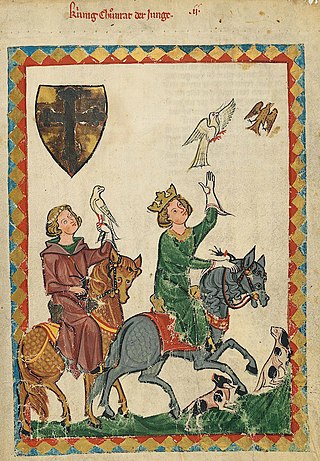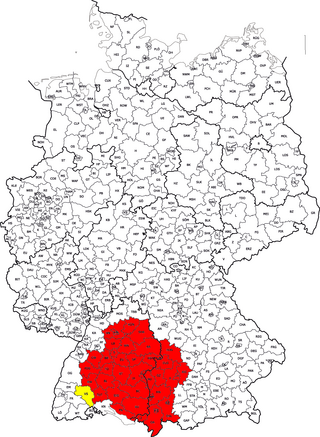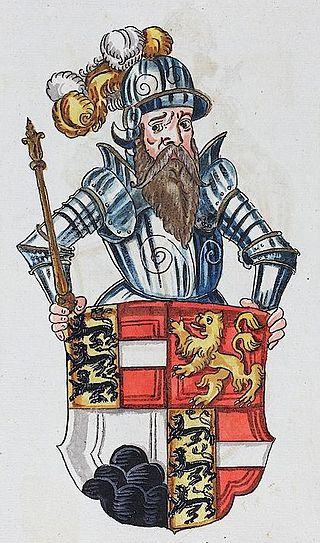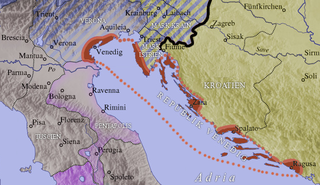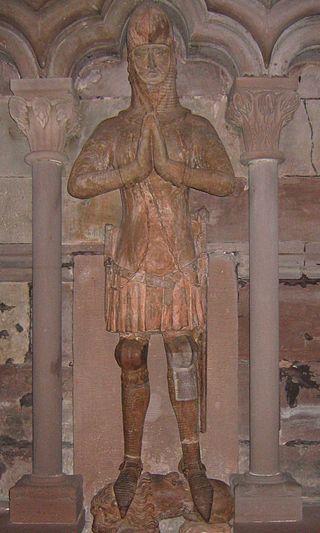| Ruler | Born | Reign | Death | Ruling part | Consort | Notes |
|---|
| Herman II | | c.1060 | 1074–1130 | 7 October 1130 | Baden | Judith of Hohenberg
c.1105
two children | He was the first to use the title of "Margrave of Baden" (in 1112). |
| Herman III the Great | | c.1105 | 1130–1160 | 16 January 1160 | Baden | Bertha of Lorraine
1134
one child
Maria of Bohemia
After 1141
one child | In 1151, the margraviate of Verona was taken from Ottokar III of Styria and conferred on Herman III. Took part in the Second Crusade. |
| Herman IV | | c.1135 | 1160–1190 | 13 September 1190 | Baden | Bertha of Tübingen
1162
seven children | Took part in various battles at the side of the German Emperor, and also joined on the Third Crusade. |
| Henry I | | c.1180? | 1190–1231 | 2 July 1231 | Baden-Hachberg | Agnes of Urach
Before 1231
three children | |
| Herman V |  | c.1180 | 1190–1243 | 16 January 1243 | Baden | Irmengard of the Palatinate-Rhine
1217
four children | |
| Henry II |  | Before 1231 | 1231–1289 | 1297 or 1298 | Baden-Hachberg | Anne of Üsingen-Ketzingen
Before 1289
eight children | Abdicated in 1289, and joined the Teutonic Knights. |
| Herman VI |  | c.1226 | 1243–1250 | 4 October 1250 | Baden | Gertrude of Austria
1248
two children | Fought in the Austrian War of Succession in 1246, claiming the title "Duke of Austria" from 1248. |
| Frederick I |  | c.1249 | 1250–1268 | 29 October 1268 | Baden | Unmarried | Nephew and uncle (respectively son and brother of Herman VI) ruled jointly. Frederick accompanied King Conradin in his battles and was beheaded with him in 1268. From then on, Rudolph ruled alone. |
| Rudolph I |  | c.1230 | 1250–1288 | 19 November 1288 | Baden | Kunigunde of Eberstein
20 May 1257
eight children |
| Herman VII the Rouser |  | c.1266 | 1288–1291 | 12 July 1291 | Baden | Agnes of Truhendingen
Before 6 October 1278
four children | Children of Rudolph III, ruled jointly. From 1290 the brothers shared land with the sons of Herman VII. |
| Rudolph II the Elder |  | c.1266? | 1288–1295 | 14 February 1295 | Baden | Adelaide of Ochsenstein
2 May 1285
three children |
| Rudolph III the Younger | | c.1266? | 1288–1332 | 2 February 1332 | Baden | Jutta of Strassberg
1306
no children |
| Hesso | | c.1268 | 1288–1297 | 13 February 1297 | Baden | Clara of Klingen
Before 1291
one child?
Irmengard of Württemberg
Before 1295
no children
Adelaide of Rieneck
Before 1299
one child |
| Henry III |  | Before 1289 | 1289–1330 | 1330 | Baden-Hachberg | Agnes of Hohenberg
Before 1310
three children | |
| Rudolph I |  | Before 1289 | 1290–1313 | 1313 | Baden-Hachberg-Sausenberg | Agnes of Rötteln
1298 or 1299
three children | Son of Henry II, founded the Baden-Hachberg-Sausenberg Branch. |
| Frederick II | | Before 1278 | 1291–1333 | 22 June 1333 | Baden-Eberstein | Agnes of Weinsberg
before 16 October 1312
one child
Margaret of Vaihingen
Before 1333
four children | Son of Herman VII, founded the Baden-Baden-Eberstein Branch |
| Herman VIII | | Before 1278 | 1291–1300 | 1300 | Baden-Pforzheim | Unmarried | Son of Herman VII, ruled jointly with his brother Rudolph IV. |
| Rudolph Hesso | | c.1290 | 1297–1335 | 17 August 1335 | Baden | Joanna of Burgundy
Before 1335
two children | With no male heirs, Baden-Baden was inherited after his death by his cousin, Rudolf IV, Margrave of Baden-Pforzheim. |
| Rudolph IV | | Before 1278 | 1291–1335 | 25 June 1348 | Baden-Pforzheim | Liutgard of Bolanden
28 February 1318
no children
Maria of Oettingen
18 February 1326
two children | Ruled Pforzheim with his brother Herman VIII. Rudolph inherited Baden in 1335, after the death of his cousin Rudolph Hesso. |
| 1335-1348 | Baden |
| Henry | | 1300 | 1313–1318 | 1318 | Baden-Hachberg-Sausenberg | Unmarried | Sons of Rudolph IV, ruled jointly. |
| Rudolph II | | 1301 | 1313–1352 | 1352 | Baden-Hachberg-Sausenberg | Catherine of Thierstein
c.1343
two children |
| Otto |  | 1302 | 1318–1384 | 1384 | Baden-Hachberg-Sausenberg | Catherine of Grandson
no children
Elisabeth of Strasbourg
Before 1352
no children |
| Henry IV |  | Before 1310 | 1330–1369 | 1369 | Baden-Hachberg | Anna of Usenberg
Before 1369
four children | |
| Herman IX |  | Before 1333 | 1333–1353 | 13 April 1353 | Baden-Eberstein | Matilda of Vaihingen
c.3 June 1341
one child | Son of Frederick II, he had a son, who predeceased him. At his death Baden-Baden-Eberstein returned to Baden-Baden. |
| Rudolph V |  | Before 1348 | 1348–1361 | 28 August 1361 | Baden-Pforzheim | Adelaide of Belfort
26 August 1347
no children | After his death without children, Pforzheim returned again to Baden-Baden, to the hands of his nephew Rudolph VI. |
| Frederick III | | 1327 | 1348–1353 | 2 September 1353 | Baden | Margaret of Baden-Baden
1345
two children | Sons of Rudolph V, ruled jointly. Frederick married his cousin Margaret, daughter of Rudolph Hesso, and Rudolph IX inherited (after his nrtoher and uncle's death) Pforzheim, reuniting it with Baden-Baden. |
| Rudolph VI |  | c.1345 | 1353–1372 | 21 March 1372 | Baden | Matilda of Sponheim
1356
three children | Inherited Pforzheim from his uncle, Rudolph V, in 1361, reuniting it with Baden. |
| Otto I | | Before 1369 | 1369–1386 | 9 July 1386 | Baden-Hachberg | Unmarried | Died at the Battle of Sempach, against the Swiss. |
| Bernard I |  | 1364 | 1372–1431 | 5 April 1431 | Baden | Margaret of Hohenberg
1 September 1384
(annulled 1391)
no children
Anna of Oettingen
27 March 1398
ten children | Sons of Rudolph IX, ruled jointly. In 1415 Bernard annexed the lands of Baden-Hachberg. |
| Rudolph VII |  | After 1356? | 1372–1391 | 1391 | Baden | Unmarried |
| Rudolph III |  | 1343 | 1384–1428 | 8 February 1428 | Baden-Hachberg-Sausenberg | Adelaide of Lichtenberg
1373
no children
Anna of Freiburg
1387
thirteen children | |
| John I | | Before 1369 | 1386–1409 | 1409 | Baden-Hachberg | Unmarried | Brothers of Otto I, ruled jointly. |
| Hesso | | Before 1369 | 1386–1410 | 1410 | Baden-Hachberg | Anna of Geroldseck
Before 1381
three children
Margaret of Tübingen
1381
one child |
| Otto II |  | Before 1381 | 1410–1415 | 1418 | Baden-Hachberg | Unmarried | In 1415, possibly in debt, sold Hachberg to his cousin Bernard I of Baden-Baden. |
| William |  | 11 July 1406 | 1428–1441 | 15 August 1482 | Baden-Hachberg-Sausenberg | Elisabeth of Montfort-Bregenz
1425
(annulled 1436)
three children | Abdicated in 1441 for his sons. |
| James I |  | 15 March 1407 | 1431–1453 | 13 October 1453 | Baden | Catherine of Lorraine
25 July 1422
seven children | |
| Hugo | | After 1427 | 1441–1444 | 1444 | Baden-Hachberg-Sausenberg | Unmarried | Sons of Wiliam I, ruled jointly. In 1458, Rudolph inherited the Swiss county of Neuchâtel. |
| Rudolph IV |  | 1426 or 1427 | 1441–1487 | 12 April 1487 | Baden-Hachberg-Sausenberg | Margaret of Vienne
c.1450
two children |
| Bernard II |  | 1428 or 1429 | 1453–1458 | 15 July 1458 | Baden | Unmarried | Co-ruled with his brother Charles I. He spent most of his income assisting the poor and those in need. |
| Charles I |  | 1427 | 1453–1475 | 24 February 1475 | Baden | Catherine of Austria
1 July 1447
six children | Co-ruled with his brother until 1458. then ruled alone. |
| Christopher I |  | 13 November 1453 | 1475–1515 | 19 April 1527 | Baden | Ottilie of Katzenelnbogen
30 January 1469
fifteen children | In 1503 annexed Baden-Hachberg-Sausenberg. Ruled an unified Baden, but abdicated for his sons, who divided Baden again. |
| Philip | | 1454 | 1487–1503 | 9 September 1503 | Baden-Hachberg-Sausenberg | Maria of Savoy
October 1478
one child | Also count of Neuchâtel. Didn't have male heirs and Baden-Hachberg Sausenberg was incorporated in Baden-Baden. However, his possessions in Neuchâtel passed to his daughter Joanna. |
| Bernard III |  | 7 October 1474 | 1515–1536 | 29 June 1536 | Baden-Baden | Franziska of Luxembourg-Ligny
1535
two children | First margrave of the recreated Baden-Baden. After his death his lands were divided between his sons: Christopher II received Baden-Baden-Rodemachern, and Philibert I, the remaining Baden-Baden. However, as his heirs were minors, the lands remained united under the regency of his widow Franziska. |
| Ernest I |  | 7 October 1482 | 1515–1552 | 6 February 1553 | Baden-Durlach | Elisabeth of Brandenburg-Ansbach-Kulmbach
29 September 1510
seven children
Ursula of Rosenfeld
1518
(morganatic)
three children
Anna Bombast of Hohenheim
1 March 1544
(morganatic)
no children | First margrave of Baden-Durlach. Abdicated for his son. |
| Philip I | | 6 November 1479 | 1515–1533 | 17 September 1533 | Baden-Sponheim | Elisabeth of the Palatinate
3 January 1503
Heidelberg
six children | Received Baden-Sponheim from his father, Christopher I. Died with no surviving sons, and his lands reverted to Baden-Baden. |
| Regency of Franziska of Luxembourg-Ligny (1536-1554) | Children of Bernard III, ruled under their mother, and then divided the land. |
| Philibert I |  | 22 January 1536 | 1536–1569 | 3 October 1569 | Baden-Baden | Matilda of Bavaria
17 January 1557
four children |
| Christopher II |  | 26 February 1537 | 1554–1575 | 2 August 1575 | Baden-Baden-Rodemachern | Cecilia of Sweden
11 November 1564
six children |
| Bernard IV | | 1517 | 1552–1553 | 20 January 1553 | Baden-Durlach | Unmarried | Left no heirs. The land goes to his brother, Charles II. |
| Charles II |  | 24 July 1529 | 1553–1577 | 23 March 1577 | Baden-Durlach | Kunigunde of Brandenburg-Kulmbach
10 March 1551
two children
Anna of the Palatinate-Veldenz
1 August 1558
Heidelberg
six children | After his death Baden-Durlach was divided between his three sons: Baden-Durlach-Hachberg went to Jacob III, second son of Charles; Baden-Durlach-Sausenberg to George Frederick, third son of Charles; the remaining Baden-Durlach went to the oldest son, Ernest Frederick. But as the heirs were minors, until 1584 Baden-Durlach remained united under regents. |
| Regency of Albert V, Duke of Bavaria (1569-1577) | The Catholic rite was reintroduced on Baden. Left no descendants. Baden-Baden is inherited by his cousin Edward Fortunatus, of the branch of Baden-Rodemachern. |
| Philip II |  | 19 February 1559 | 1569–1588 | 7 June 1588 | Baden-Baden | Unmarried |
| Edward Fortunatus |  | 17 September 1565 | 1575–1588 | 8 June 1600 | Baden-Rodemachern | Maria van Eicken
13 March 1591
Brussels
four children | Son of Christopher II, inherited Baden-Baden in 1588 from his cousin Philip III. In the same year he abdicated of Baden-Baden-Rodemachern to his younger brother Philip IV. In 1594 Baden-Baden was occupied by Baden-Durlach. |
| 1588-1594 | Baden-Baden |
| James III [1] |  | 26 May 1562 | 1584–1590 | 17 August 1590 | Baden-Durlach-Hachberg | Elisabeth of Culemborg-Pallandt
6 September 1584
four children | Second son of Charles II, received Baden-Durlach-Hachberg. |
| Philip IV | | 15 August 1567 | 1588–1620 | 6 November 1620 | Baden-Baden-Rodemachern | Maria van Eicken
13 March 1591
Brussels
four children | Inherited Baden-Baden-Rodemachern in 1588 from his older brother Edward Fortunatus, who abdicated on him. After his death Rodemachern passed to his nephew and second son of Edward Fortunatus, Herman. |
| Regency of Ernest Frederick, Margrave of Baden-Durlach (1590-1591) | Posthumous son of James II, died in infancy, under the illegal regency of the margrave of Baden-Durlach, who also annexed Ernest James' margraviate. |
| Ernest James | | 24 August 1590 | 1590–1591 | 29 May 1591 | Baden-Durlach-Hachberg | Unmarried |
| Regency of Anna of the Palatinate-Veldenz, Louis III, Duke of Württemberg and Louis VI, Elector Palatine (1577-1584) | Children of Charles II. The oldest son, Ernest Frederick, received the remaining Baden-Durlach. Left no descendants and his lands were inherited by George Frederick, his brother from Baden-Durlach-Sausenberg. Occupied Baden-Baden and passed it to his brother after his death. George Frederick was the third son of Charles II, and received Baden-Durlach-Sausenberg. After the death of his older brothers without heirs, he united in 1604 Baden-Durlach under his rule. Also retained, until 1621, Baden-Baden, but was defeated by his kinsman William II, son of Edward Fortunatus. Reunited, in 1604, Baden-Durlach. |
| Ernest Frederick |  | 17 October 1560 | 1577–1604 | 14 April 1604 | Baden-Durlach | Anne of East Frisia
21 December 1585
no children |
| 1594–1604 | Baden-Baden |
| George Frederick |  | 30 January 1573 | 1577-1604 | 24 September 1638 | Baden-Durlach-Sausenberg | Juliane Ursula of Salm-Neufville
2 July 1592
fifteen children
Agatha of Erbach-Breuberg
23 October 1614
three children
Elizabeth Stolz
29 July 1621
(morganatic)
no children |
| 1604–1621 | Baden-Baden |
| 1621–1638 | Baden-Durlach |
| Herman Fortunatus | | 23 January 1595 | 1620–1665 | 4 January 1665 | Baden-Baden-Rodemachern | Antonia Elisabeth of Criechingen
18 April 1627
three children
Maria Sidonia of Daun-Falkenstein
After 1635
two children | Second son of Edward Fortunatus, inherited from his uncle Baden-Baden-Rodemachern. |
| William II |  | 30 July 1593 | 1621–1677 | 22 May 1677 | Baden-Baden | Catherine Ursula of Hohenzollern-Hechingen
13 October 1624
fourteen children
Maria Magdalena of Oettingen-Baldern
1650
Vienna
five children | Oldest son of Edward Fortunatus, recovered his inheritance in 1621. |
| Frederick V the Kinsman [2] |  | 6 July 1594 | 1638–1659 | 8 September 1659 | Baden-Durlach | Barbara of Württemberg
21 December 1616
seven children
Eleonore of Solms-Laubach
8 October 1627
three children
Maria Elisabeth of Waldeck-Eisenberg
21 January 1634
no children
Anna Maria von Hohen-Geroldseck
13 February 1644
no children
Eusebia Elisabeth of Fürstenberg
20 May 1650
no children | |
| Frederick VI the Turkish |  | 16 November 1617 | 1659–1677 | 31 January 1677 | Baden-Durlach | Christina Magdalena of the Palatinate-Zweibrücken-Kleeburg
30 November 1642
Stockholm
eight children
Johanna Bayer of Sendau
After 1662
(morganatic)
two children | |
| Charles William | | 1627 | 1665–1666 | 1666 | Baden-Baden-Rodemachern | Unmarried | Died without descendants and his lands reverted to Baden-Baden. |
| Louis William the Turkish |  | 8 April 1655 | 1677–1707 | 4 January 1707 | Baden-Baden | Sibylle of Saxe-Lauenburg
27 March 1690
Ostrov
ten children | Grandson of William I. Made war with France. |
| Frederick VII Magnus |  | 23 September 1647 | 1677–1709 | 25 June 1709 | Baden-Durlach | Augusta Marie of Holstein-Gottorp
15 May 1670
Husum
eleven children | |
| Regency of Sibylle of Saxe-Lauenburg (1707-1727) | Sibylle has been credited with the reconstruction of Baden-Baden, which had been ravaged greatly by the French during various wars. |
Louis George the Hunter
(under regency of Sibylle of Saxe-Lauenburg (1707-1727)) |  | 7 June 1702 | 1707–1761 | 22 October 1761 | Baden-Baden | Maria Anna of Schwarzenberg
8 April 1721
Český Krumlov
four children
Maria Anna Josepha of Bavaria
20 July 1755
Ettlingen
no children |
| Charles III William |  | 27 January 1679 | 1709–1738 | 12 May 1738 | Baden-Durlach | Magdalena Wilhelmine of Württemberg
27 June 1697
(separated 1715)
three children | |
| August George |  | 14 January 1706 | 1761–1771 | 21 October 1771 | Baden-Baden | Maria Victoria of Arenberg
7 December 1735
Rastatt
no children | Last male member of the Baden-Baden line, after his death without heirs Baden-Baden fell to the Baden-Durlach line, who reunited all Baden. |
| Regencies of Magdalena Wilhelmine of Württemberg (1738-1742) and Charles August of Baden-Durlach (1738-1746) | In 1746 attained majority. In 1771 inherited the Baden-Baden lands and reunified the margraviate of Baden.In 1803 became Elector. |
| Charles Frederick |  | 22 November 1728 | 1738–1771 | 10 June 1811 | Baden-Durlach | Caroline Louise of Hesse-Darmstadt
28 January 1751
five children
Louise Caroline of Hochberg
24 November 1787
(morganatic)
five children |
| 1771–1803 | Baden |























































